Cyprus, or officially the Republic of Cyprus, is a beautiful island nation in the Mediterranean sea, just south of Turkey.
Cyprus is a popular holiday destination for people from around the world thanks to an abundance of sunshine all year round, beautiful beaches, and stunning historic sights.
But it’s not just that – Cyprus has become known for property investments, tax haven for corporations and individuals, and as the retirement place for many expats, mainly British.
As a result of former British rule, people drive on the left, most speak English and the UK still owns part of the island.
If you’re planning a trip to Cyprus, this comprehensive guide will cover everything you know before booking your trip.
An Insider’s Guide
This Insider’s Guide to Cyprus summarizes my 6.5 years living in this beautiful country and gives you a one-glance view of what the country has to offer.
It will cover everything you need to know about Cyprus, whether you’re coming for a holiday or considering moving to the country as an expat.
As someone who has encountered a lot of incorrect and outdated information about the island, I will do my best to fill this guide with insights you can only get from locals. And most importantly, tips and advice which will save you a lot of time, frustration and money.
Let’s dive in!
PS: this article will only discuss the Republic of Cyprus, not the Northern-occupied territory. More on that in the history section.
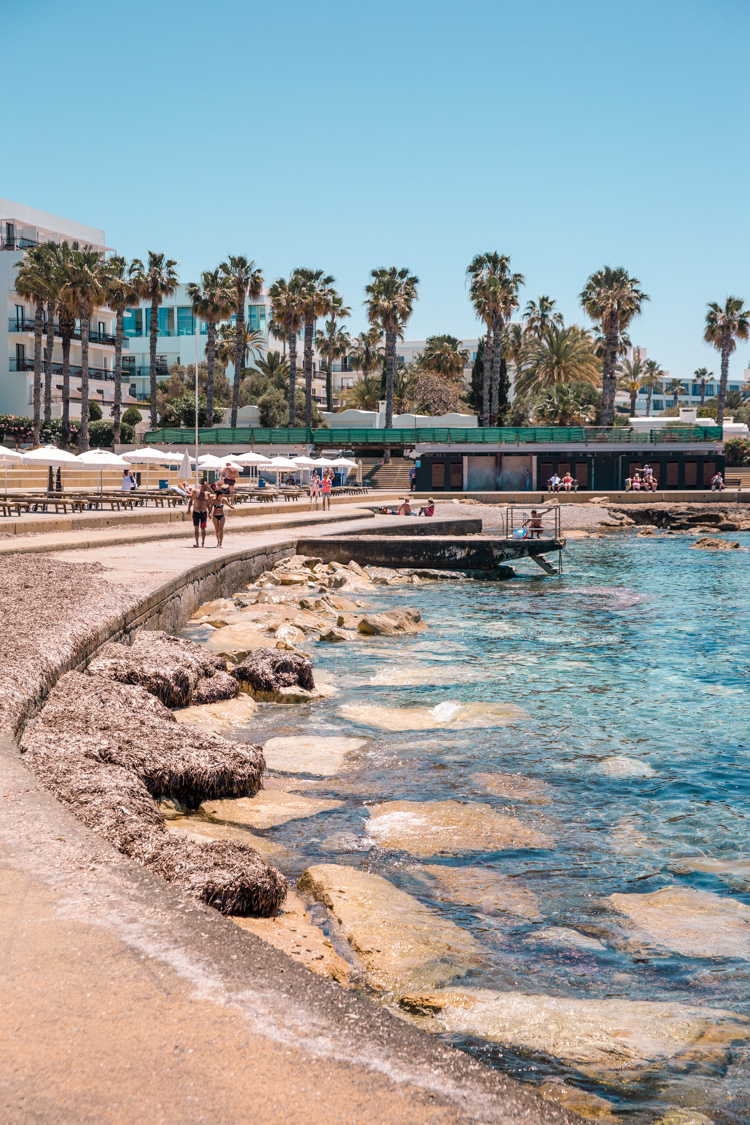

Introduction to Cyprus
The Republic of Cyprus is the third largest island in the Mediterranean Sea and a country with some of the best climates in Europe.
Its proximity to the Middle East makes it a wonderful base for exploring the Middle East and Asia, but also the Greek island thanks to cheap and short flights available almost all year round.
The two official languages in Cyprus are Greek and Turkish, but English is widely spoken. You won’t struggle with English in any resorts or restaurants, but government offices may be a bit of a challenge.
Because people speak Greek on the island, many assume incorrectly that Cyprus belongs to Greece. Cyprus has been an independent nation since 1960.
A very important piece of information is often omitted on purpose by travel agencies in Europe: there is no south and north side of the island. The island is officially divided into the Republic of Cyprus and the northern territory illegally occupied by Turkey.
That is the official standing of the international community, yet many tourism agencies will sell you a holiday to Cyprus, but you actually end up going to the illegally occupied part.
Cyprus has been part of the European Union since 2004 and joined the eurozone in 2008.
There are two airports you can use to legally enter the country – Paphos International Airport and Larnaca international airport. Entry through Ercan airport is considered an illegal entry to the country.


Where is Cyprus?
Cyprus is an island on the borders of the Middle East and Europe, located in the Mediterranean sea. It is the third biggest island in the Mediterranean.
Culturally, Cyprus is considered to be part of Southern Europe, and geographically it has a lot of influences from the Middle East.
Cyprus measures 240 kilometers (149 miles) across from end to end, and 100 kilometers (62 miles) at its widest point. It is located between latitudes of 34 and 36 N, and longitudes of 32 and 35E.
Cyprus is well connected to most European cities with direct flights, and you can also visit most of the Greek islands with short direct flights in the summer months.
Location of Cyprus on the Map


Short History of Cyprus
The earliest indication of human activity in Cyprus dates back to 10,000 BC. During the Bronze Age, Greek settlers began arriving in Cyprus around 1400 BC, which also helps to explain the important part Cyprus plays in Greek mythology (Greek Goddess Aphrodite & Adonis have their birthplace in Cyprus).
In the Middle Ages, Cyprus became part of the East Roman or Byzantine Empire, which religiously heavily influenced the current Greek Cypriot Community.
In 1191 England captured the island thanks to King Richard I of England, and following the death of its last English ruler in 1473, the Republic of Venice assumed control of the island. In 1489, Venice formally annexed the Kingdom of Cyprus.
In 1570 the island was brought under Ottoman rule following a heavy assault. While still under Ottoman rule, Cyprus was leased to the British Empire in 1878, under the agreement that Britain would use the island to build protection for the Ottoman empire against Russian attacks. Cyprus then became an important strategic and army location in Europe.
In 1914, following the outbreak of the First World War, the British Empire formally annexed Cyprus. The majority of the Greek Cypriot population was hoping that these moves would be followed by enosis – which was the annexation of Cyprus with Greece. Enosis was part of official Greek national policy until the 1950s.
In August 1960, Cyprus was granted independence by the Zurich and London Agreement, but the UK retained two sovereign bases in Akrotiri and Dhekelia.
Another prominent part of the history played out in 1974, which eventually led to the division of Cyprus into North and South, and the creation of the buffer zone known as the green line.
In July 1974 a Greek military coup was carried out in Cyprus, in an attempt to annex the island to Greece. As a response, Turkey invaded the island referring to the protection of the established constitutional order and agreement from 1960. These justifications have been rejected by the whole international community, apart from Turkey obviously.
By August, due to pressure from the international community, a ceasefire was agreed upon, but 36% of the island has already been captured by Turkish forces. It is estimated that 180,000 Greek Cypriots were evicted from their homes and land in the North. At the same time, 50,000 Turkish Cypriots were resettled in the North, taking homes and land of the Greek Cypriots.
In December 1974, constitutional order was regained, but the Turkish forces remained in the North.
Since then, a number of efforts have been made to reconcile the situation on the island, with the last round in 2005, which didn’t lead anywhere.
As you would imagine, the Republic of Cyprus doesn’t encourage tourism in the North as it’s factually legalizing the occupation of their land.
Weather in Cyprus
Weather in Cyprus is one of the main things that draws in millions of tourists every year, but also lots of ex-pats who make Cyprus their permanent residence. Cyprus is a country that benefits from most sunny days among other Mediterranean countries.
My personal favourite time in Cyprus was definitely the winter.
The winter months are much quieter in terms of tourist activity, but you still get pretty amazing weather up to late December. The rainy days you can normally count on your fingers, and even if it does get colder, it is much more bearable with the sunshine during the winter.
One downside that the winter months do have is the fact that almost no properties in Cyprus are insulated, so if you’re staying in a rented apartment in winter, you’re likely to be very cold there and have to use the airconditioning to heat up the place. Almost no properties have central heating.
The weather conditions vary across the island, but not drastically. The difference is usually a few degrees on the coastal locations, and much of the bad weather usually rolls around the mountains.


Average Temperatures in Cyprus During the Year
- January – low 7C and high 17C
- February – low 8C and high 17C
- March – low 9C and high 19C
- April – low 11C and high 22C
- May – low 15C and high 25C
- June – low 18C and high 28C
- July – low 20C and high 30C
- August – low 21C and high 35C
- September – low 20C and high 30C
- October – low 18C and high 26C
- November – low 13C and high 25C
- December – low 10C and high 19C
Read the posts below for a close-up look at the different seasons in Cyprus, including my detailed month-by-month guide based on my personal experience.
The Best Time to Visit Cyprus – Month by Month Guide
Month by Month Updates about Weather in Cyprus
- January in Cyprus
- February Cyprus Weather
- March in Cyprus
- Cyprus Weather in May
- Cyprus April Weather
- Cyprus Weather in December
- October in Cyprus
- November in Cyprus
When is the Best Time to Visit Cyprus?
I think the best time to come to Cyprus is early autumn and winter when the temperatures are still high but the tourism season is slowly dying out.
The best months to visit Cyprus would be October and November, and then again in April and May. The weather tends to be quite stable in these months so you’re unlikely to be surprised by a week of rain while on holiday on the island.


Driving in Cyprus
If you’re planning to rent a car while visiting Cyprus, getting accurate information is absolutely crucial and will save you a lot of headaches and surprises on the road.
During the first year, I lived in Cyprus, I was relying heavily on car rental companies before me and my husband purchased our first car.
I have lots of experience on the road, both in a rented car and on my own. I haven’t been driving a car for more than 18 years when I came to Cyprus and have to re-learn everything, in road traffic which can be only described as more than challenging.
The reality of driving a car in Cyprus can be summarized in a few points here:
- Cyprus has left-hand side traffic – the consequences of the British occupation
- locals don’t know how to park, or they simply ignore the rules for parking. That means leaving the car blocking the main road or the whole width of the pavement is a frequent sight. Parking is an Olympic sport in Cyprus and they are certainly the masters of finding original parking locations.
- most of the traffic laws are simply ignored – that includes stop signs, give way signs and even traffic lights. You have to be very careful when driving in cities and even on the highway.
- the only two things I have seen monitored by the police were alcohol consumption – common in the cities, and speeding on the highway – frequent on the highway especially between Paphos and Limassol.
- having said that, drink driving is very frequent and culturally acceptable in Cyprus
- the roads are mostly in ok conditions, but if you venture further out to the villages and mountains they are not that great. Some locations like the Akamas national park should be only accessed by a quad bike or a 4×4 vehicle. When driving in the winter in Troodos, snow chains are recommended.
For more details on rental companies recommendations and other details relating to road traffic, there is more detailed information available in these two articles:
Cyprus Travel Tips: Renting a Car in Cyprus
Driving in Cyprus: The Complete Guide by a Local Expat


The Best of Cyprus: 10+ Non-Touristy Things to Do in Cyprus
Finding things to do in Cyprus is pretty easy, but the list tends to be repetitive and focus on the same locations and experiences, which in the summer months you will find predictably crowded.
If you want to experience Cyprus as a local, I have compiled a list of some of my favorite places to see, things to do, and experiences.
More details on each activity can be found in this post.
- Views from Stavrovouni Monastery
- Mezze at Kolios Winery
- Enjoy a Glass of Champagne at Sunset Picnic
- Swim at Blue Lagoon
- Go Wild with a Quad-Bike
- Pick the cool historic places, not the crowded ones
- Visit Troodos Villages
- Book Wine Tasting
- Have a Night Out in Ayia Napa
- See the Waterfalls
- Visit the Last Divided Capital in the World
- Get Off the Beaten Path


Destinations in Cyprus: Short Overview
Not sure where to stay in Cyprus? Which location to focus on or perhaps where to venture with your rented car?
This list will give you a quick glance view of each destination in Cyprus!
- Paphos – great for nature, beaches, and family-friendly locations. More quiet compared to destinations like Ayia Napa. Great base for exploring Akamas National Park, Lara Beach, and Blue Lagoon. A popular place for wedding venues and a retirement location for the British expats (especially the area of Peyia close to Coral Bay).
- Limassol – a cosmopolitan city with beachside hotels, old town, and vibrant nightlife. Popular especially with Russian expats. Limassol is quite a busy city with crazy traffic, and lots of events during the year. It has a beautiful Marina and coastal promenade for evening walks. The wine festival is held here each autumn (more on that in Limassol section below).
- Larnaca – the airport town of Larnaca is not as big as the previous two and to me personally, it feels more run down. The main developed area is around the coastal promenade. You will find good-value hotels here. There is a good stretch of beach in Larnaca with one cool experience – you can watch the planes land just over your head as they make their way to Larnaca airport.
- Nicosia – the capital is divided by a UN buffer zone and offers a unique chance to witness the last divided capital in the world. It has a pretty old town and nice historic museums that will tell you more about its history.
- Ayia Napa – the party capital of the island, you will be bumping into gangs of hen parties and stag do parties as you make your way through the busy streets. Great for young people, but also for families as it has a lot of family-friendly hotels.
- Protaras – a bit more peaceful compared to Ayia Napa, the crowd tends to be a bit older and you will find a lot of families on holidays here. Beautiful beaches and proximity to Larnaca airport make Protaras a popular holiday destination.
- Troodos Mountains – Troodos square is great to visit in any season, especially in the winter. Offers a chance for skiing in the winter months. Great views, but the drive there is not for the light hearted, with lots of steep curves and drops.
- Polis – the old town in Polis is quite pretty and very much still feels local, without much tourist activity. It’s one of the cities that you mostly just pass on your way to Latchi. I personally didn’t find it super interesting.
- Latchi – a cute little town that stretches along the main road, with a charming harbour offering cruises to the Blue Lagoon. There are beautiful pristine beaches around Latchi mostly used by locals. Great as a getaway to Akamas National Park. Better value for money accommodation with amazing views.


Nature Highlights of Cyprus
It would be a shame to visit Cyprus and not experience the beautiful nature it has to offer, beyond just visiting the beaches.
The natural highlights of Cyprus include:
- Blue Flag beaches stretch around Paphos, Protaras and Ayia Napa. The north part of the Republic of Cyprus is also beautiful and largely undiscovered by tourists (Pomos and beyond).
- Troodos Mountain range that runs through the middle of the island – beautiful views all year round, hiking in the summer and skiing in the winter months
- Waterfalls – Cyprus has quite a few pretty waterfalls that can be accessed through a short hike in the Troodos Mountains
- Sea Caves – in Ayia Napa and Coral Bay/Peyia area offer a wonderful exploration opportunity not just for adults, but kids alike. Also gorgeous for sunset pictures.
- Akamas National Park – my favorite part of the island. The park offers a few hiking routes, each offering stunning views of the coastline. Beware of high temperatures in the summer, and mountain goats all year round.
- Blue Lagoon – near Akamas National Park – a great place for a day trip and a bit of diving
- Turtle Hatchery – located in Lara Beach, near Akamas. Unfortunately, the turtles hatch normally at night, so it is really hard to time your arrival, but a cool place to visit.
More natural highlights of Cyprus in these posts:
Hiking in the Avakas Gorge, Paphos
Hiking the Aphrodite Trail in Akamas
Mini Expedition in Akamas Peninsula
An Autumn Weekend in the Cute Mountain Village of Kakopetria
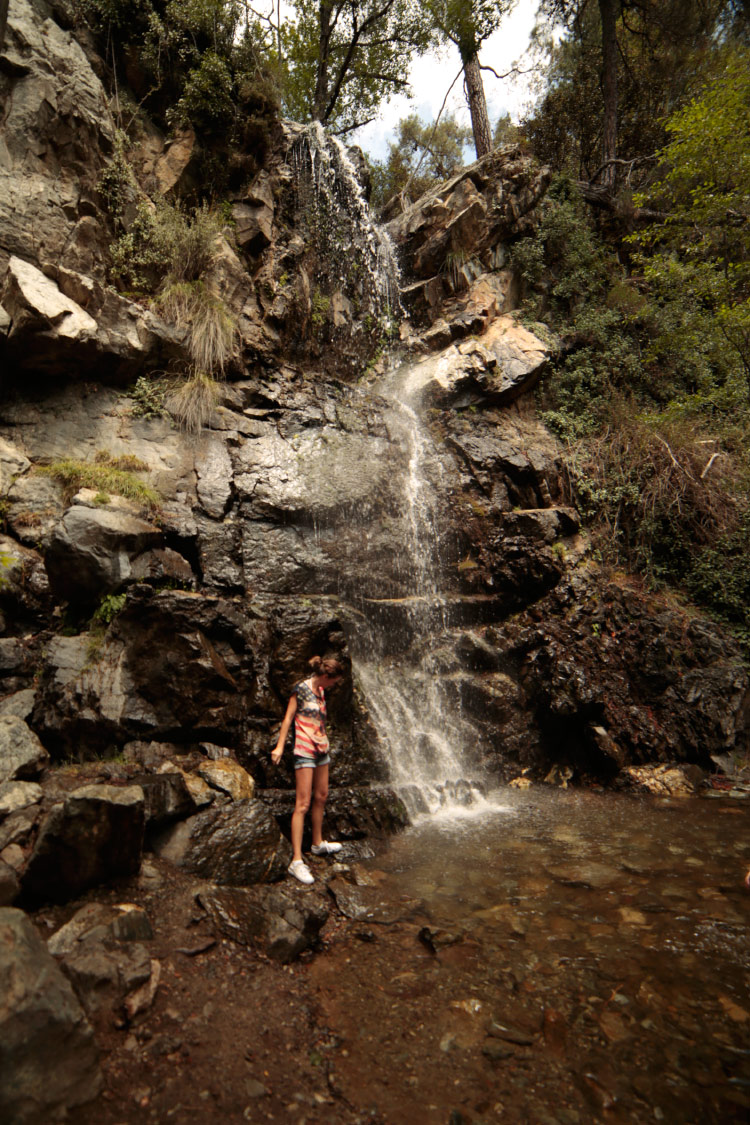

Cypriot Food & Cuisine
Cypriot cuisine is a mix of Mediterranean cooking with influences from Turkey and the Middle East, all made from fresh ingedients, and ideally served as part of meze. A lot of the food you will find in Cyprus will remind of you Greek dishes.
If you haven’t heard of meze before, it’s a series of small dishes (think slightly bigger than tapas size) that are served in a specific order. You can normally choose between fish meze or meat meze, and each meze meal contains around 8 to 10 different meals.
Cyprus prides itself on its fresh produce, and I can fully agree that the vegetables and fruit produced on the island are the best you can get. The area around Paphos is known for growing bananas for example.
Other food that is not native to the island is imported, and usually quite expensive.


Traditional Cypriot Foods & Dishes
- Souvlaki or Souvla – the most popular meat dish for Cypriots, and traditionally prepared for family gatherings. Souvla is made from cut meat (usually chicken or pork) on a skewer, which is slowly grilled over coal on a specially adapted BBQ. Best served with a big portion of freshly made local village salad.
- Halloumi – is probably the most known Cypriot export. This rubbery cheese is a staple in a grilled version in salads or as part of meze.
- Sheftalias – another popular meaty dish made from minced meat (pork or lamb) mixed with a healthy dose of fresh spices. They resemble rustic looking sausages
- Makaronia tou fornou – this dish is most commonly found in meze and consists of penne pasta cooked with a layer of minced meat. Hearthy home made cooking.
- Kleftiko – another staple of Cypriot cooking, kleftiko is prepared in a clay oven and consists of a large chunk of lamb cooked for many hours, served with potato wedges or vegetables.
- Stifado – this beef stew is prepared with onion and wine, usually spiced with cinnamon sticks and cloves for a hint of sweet flavour. Served with fresh rustic village bread.
- Koubes – these croquettes served with minced meat have a specific shape and are a popular snack food in Cyprus.
- Loukoumades – on a sweet note, these deep-fried balls of dough can be found throughout the island. After frying, they are soaked in honey and then coated with nuts or cinnamon. Not for those on a diet, but worth having a taste. They are often seen being sold by the side of the road on festivals and other gatherings.
- Koupepia – stuffed wine leaves, a dish with a long tradition that involves stuffing vine leaves with minced meat, onion, and fresh herbs, with vegetarian versions available too.
Vegetarian & Vegan Food in Cyprus
After a couple of years in Cyprus I have transitioned to eating mostly plant based diet, with occasional fish in the restaurants.
The non-meat options in restaurants and shops were certainly not as widely available as I would have liked, but I’m happy to say that things have improved massively over the last few years. There are now vegan friendly cafes and restaurants all over the island, and the shops now offer a range of healthy products suitable for vegans and vegetarians.
If you’re interested in some local hotspots for vegan eating, my friend Liv has an Instagram account where she lists all the highlights in beautiful photos. Follow her for local tips on vegan eating.
Guides by Destinations in Cyprus
PAPHOS
Paphos was my hometown for 6.5 years, so this part of my guide will be by far the longest and most comprehensive one.
Let’s dive in!
Restaurants in Paphos
Food is something I write about a lot, and happily venture out to restaurants every weekend to sample the latest offering in the culinary scene.
All the restaurants I mention in my guides are those that I have visited in person and have happily returned there many times. I do not include places on the basis that they are mentioned in other guides, without testing them myself.
Most of the tourist traps in Paphos are pretty obvious and very easy to avoid (mainly centered around the harbour area), but some places are true hidden gems that you have to try without judging the book by its cover.
I do have to add a little disclaimer: food is quite a personal concept and not everyone might have as high demands as I do when it comes to dining out.
For me, the ideal place is a combination of amazing food cooked from fresh ingredients, beautiful surroundings to enjoy it in, and friendly professional service. Those three things are harder to find than you would think.
The best restaurant in Paphos, which is the round-up after my 6 years of eating my way through the town, is linked below here. Further down you will find my individual restaurant reviews with more details on each.
Best Paphos Restaurants: Tips from a Local Expat
Ouzeri Restaurant at Almyra Hotel
Notios Restaurant at Almyra Hotel
Vegan Heaven at Meraki Cafe, Paphos
Tapas Dinner at Koutourou Ouzeri

Attractions in Paphos
In terms of attractions, Paphos is mostly known for its UNESCO World Heritage Site – the Paphos Archaeological Park, which contains the remains of Greek and Roman town present on the island of Cyprus. The park’s main points of pride and glory are the beautifully preserved Roman villas: the House of Dionysos, the House of Aion, the House of Theseus and the House of Orpheus.
All these old villas have nothing but a few stones remaining, but the true beauty is in the mosaic floors that have been beautifully preserved.
Another place worthy of any history enthusiast is Tombs of the Kings, on the main road in direction of Coral Bay. This large complex contains old burial places – not of kings as you would expect – but Paphitic aristocrats. It is also part of the UNESCO World Heritage Sites, with burial tombs dating back to 4BC.
I have visited both of these places a number of times and linked blog posts with detailed information and images below.
If you’re not a huge fan of history and mosaics, there are a few places of interest you can visit, all of which I linked below.
Attractions in Paphos I have visited and reviewed in detail here:
Agios Neophytos Monastery, Tala
Other attractions that I have not visited:
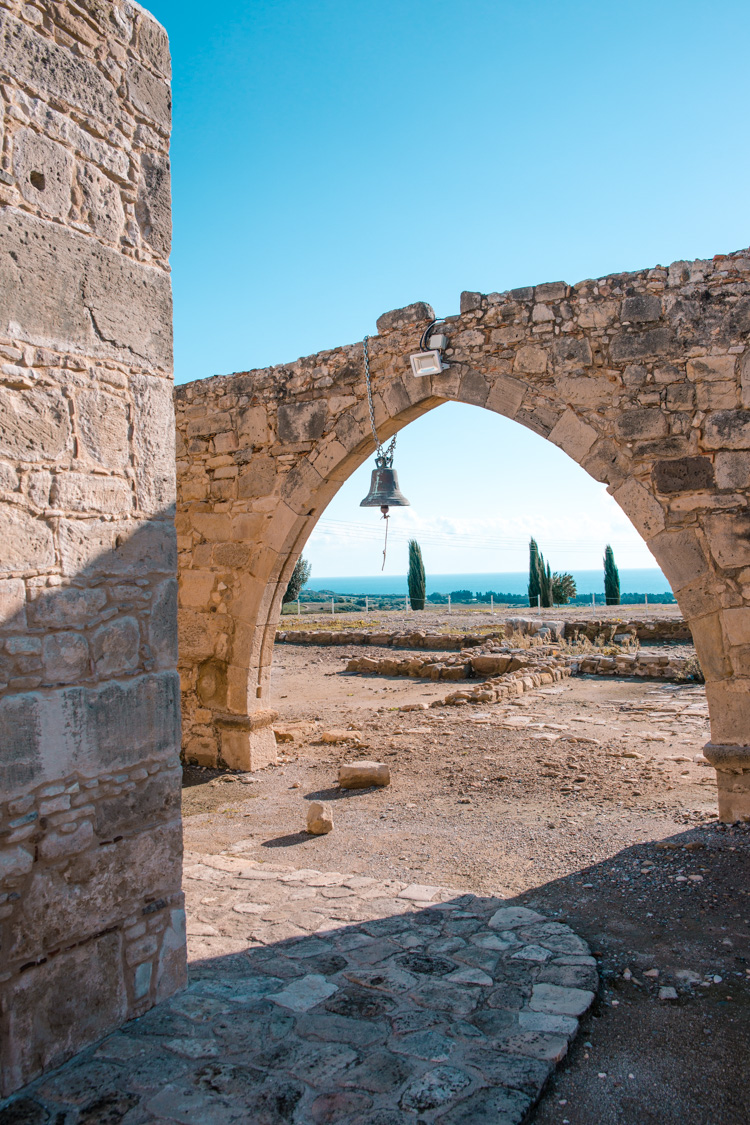
Things To Do in Paphos
If you’re wondering what’s there to do in Paphos, beyond going to the beach and visiting the historic sights, I have linked plenty of ideas below, including some hidden gems that you might have not heard of.

LIMASSOL
Limassol (locally called Lemesos) is a big cosmopolitan city on the coastline, the second largest city in Cyprus, boasting a large ex-pat community, vibrant nightlife, and great restaurants and beach clubs.
Limassol has a great historic significance as it has been built between two ancient cities of Amathus and Kourion (the latter is an archaeological site today). Some of this history is also documented in the local museum.
Limassol has a picturesque old town, an old castle in the middle of it, flashy Limassol marina (home to the Christmas markets), but much of the city is developed around the coastline.
If you’re considering Limassol for your holiday destination, there are a lot of nice hotels around the coastline with access to the beach, but the city also caters to business travelers really well.
The city is developing very fast and in 2022, the opening of Europe’s first integrated casino resort is planned. The resort is called City Dreams Mediterranean, but the opening got postponed again until late summer 2022.
Another thing worth mentioning is the Limassol Carnival, the oldest one on the island and certainly the most impressive. It’s held at the end of February each year, and people from all over the island gather here to witness the spectacular promenade and costumes. It’s loud, crowded and chaotic, but once in a lifetime experience.
Attractions & Things to Do in Limassol
Limassol was a frequent destination of mine for the weekend and meet-ups with friends, and I compiled a few ideas about what to do in the city in the blog post linked below.
What to Do and See in Limassol, Cyprus
Things To Do in Limassol
Main attractions & sights:
Public Gardens & Coastal Promenade
Oleastro Olive Oil Park & Museum, Anogyra – close to Limassol
Monastery of Holly Cross in Omodos – in Troodos


NICOSIA
Nicosia (Lefkosia in Greek) is a city I probably spent the least amount of time in.
For most people, the main reason for visiting Nicosia will be the chance to witness the last divided capital in the world. The UN buffer zone (the ‘Green Line’) goes through the city and if you want to enter the North side of the city you can do so only in designated areas.
Nicosia is full of interesting museums, and a walk through the old town will expose you to an array of different influences, both architecturally but also culturally and religiously. It is also the financial and business hub of the country, and a modern developed capital city.
Nicosia is unlikely to be your choice number one holiday destination as it’s not by the coastline, and most of the hotels in the city cater to business travelers or those coming for a weekend break.
As I mentioned earlier I don’t know Nicosia as well as Paphos, but my few trips there were documented in the posts below.
Nicosia Weekend & No Reservations Restaurant
The Gym Concept Restaurant, Nicosia (Cyprus)
Attractions & Things To Do in Nicosia
Ledra Street – connecting south and north of the city, main shopping street

LARNACA
You’ve probably heard of Larnaca if you were looking into flights for Cyprus – it’s home to one of the international airports on the island. Larnaca is the third biggest city in the Republic of Cyprus, and an important international travel hub.
In addition the airport, Larnaca has a well-developed modern coastline (Foinikoudes), but I personally found the rest of the city quite neglected and under-developed compared to other cities in Cyprus.
Having said that, there are quite a few interesting places around Larnaca which I linked below.
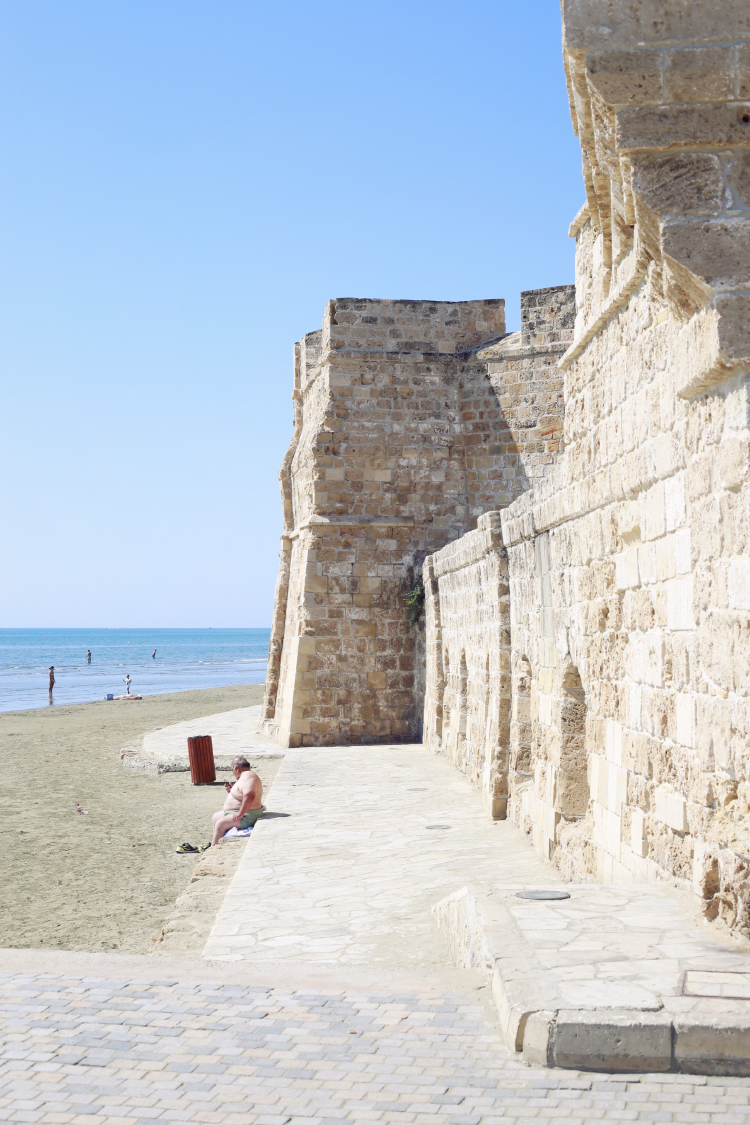
What to See in and Around Larnaca
Some my trips to and around Larnaca are documentented here:
On top of the world at Stavrovouni Monastery
Lavender Festival, Cyherbia Botanical Park
On top of the world at Stavrovouni Monastery
Things to Do in Larnaca
The Coastal Promenade
The Catacomb of the Phaneromeni Church
Mackenzie Beach for a beach day
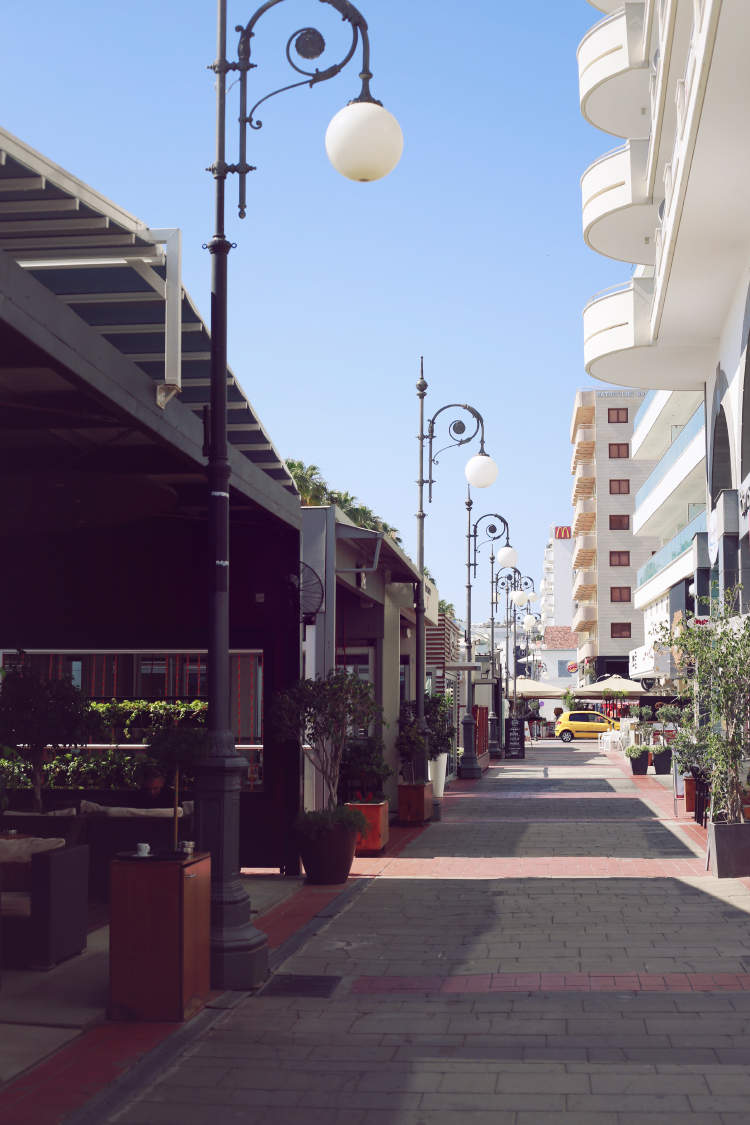
POLIS
Polis, which is also known as the gateaway to Akamas Peninsula National Park, is located in the middle of Chrysochous Bay. It’s one of the least explored cities on the island, because most of the beautiful sights are actually located outside of the city.
There are a few points of interest in Polis, which I mentioned in the articles linked below.
Places to See around Polis
Grape by the Sea Restaurant, Kato Pyrgos
A Spectacular Drive: the Road to Kato Pyrgos
Polis Herb Garden & Restaurant
Things to Do
Other things to do which I explored but didn’t document for the blog include:
Cyprus Bucket List Series
Throughout the existence of this blog, I compiled these bucket list series that highlight the best of the best for some of the most popular topics.
Feel free to check them out here:
Cyprus Bucket List – Best Beaches to Soak up Sun in Cyprus
Cyprus Bucket List: Things to Do in Cyprus with Kids
Cyprus Bucket List: Cyprus Wineries & Wine Tasting Experiences
Cyprus Bucket List: 7 Natural Wonders You Shouldn’t Miss
Cyprus Bucket List: The Coolest Beach Bars and Restaurants
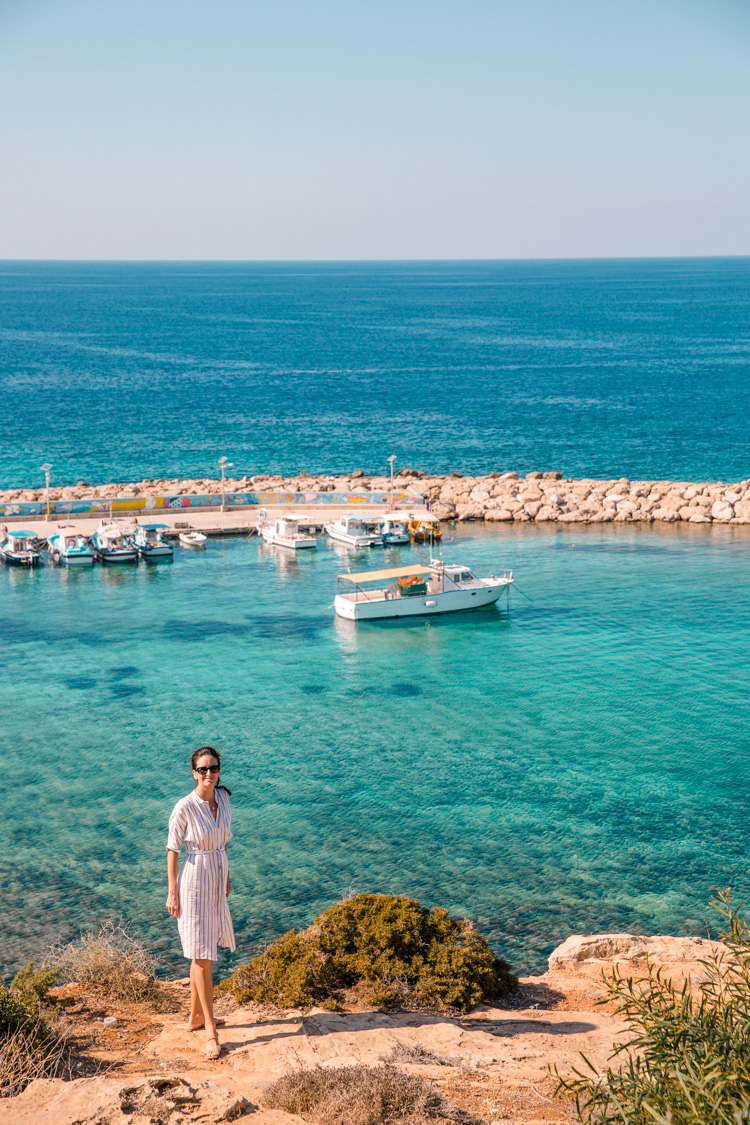

Where to Stay in Cyprus
Cyprus has a well established network of hotels of all categories distributed throughout hte island, but centered mainly around the coastal areas and the towns of Paphos, Limassol and Larnaca. Limassol with Nicosia has a lot of hotels that cater for business travelers.
Family-friendly resorts are mainly in the cities of Paphos, Protaras and Larnaca.
If you’re looking for five-star resorts, great options are in Paphos (Elysium), Limassol (Londa Hotel), but also Nicosia if you don’t mind staying inland.
Even though I have lived in Paphos, I have traveled extensively around the island and stayed in many cool hotels and alternative accommodations.
These are detailed in the blog posts below, with pictures from some of my favorite ones below.
Yurts in Cyprus, Sarama Valley
Ayii Anargyri Natural Healing Spa Resort, Cyprus
Weekend Stay at Casale Panayiotis, Cyprus
My Stay at Casale Panayiotis, Cyprus – part 2
Cap St Georges Beach Resort, Cyprus


3 Unique Hotel Experiences in Cyprus
Londa Hotel, Limassol (Cyprus)
Euphoria Art Land – Earth House
My Stay at Euphoria Art Land, Limassol (Cyprus) – Part 2

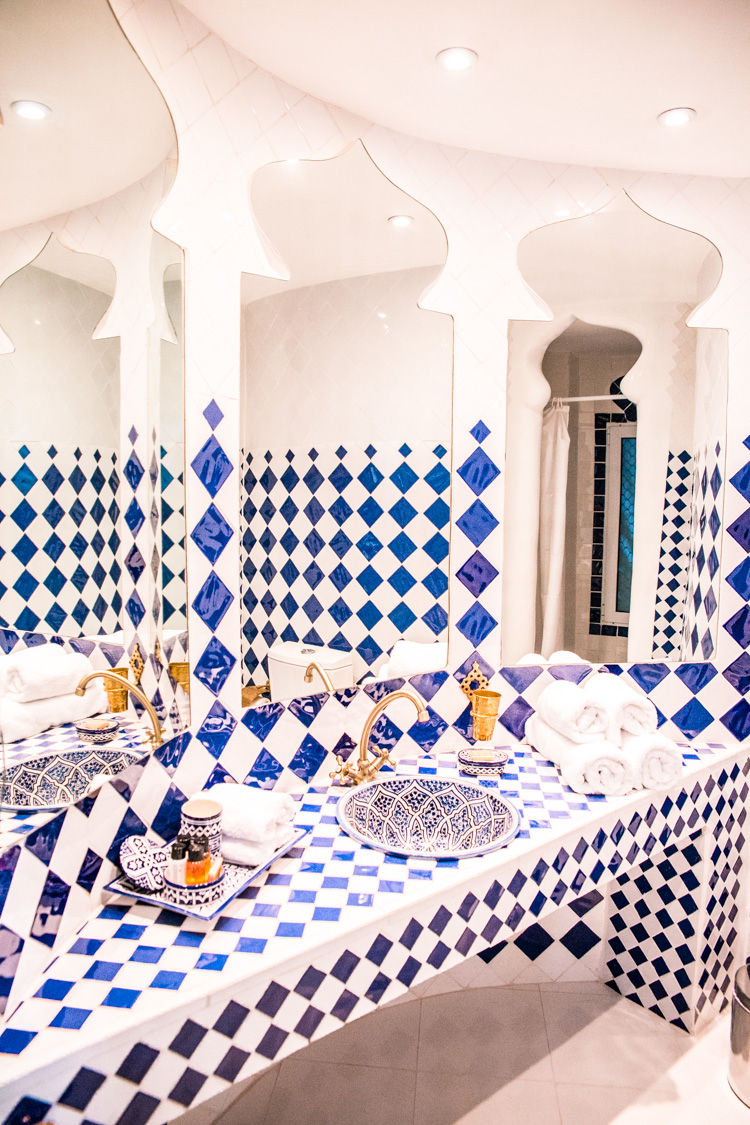
Alasia Boutique Hotel, Limassol
Weekend Stay at Aelia Wellness Retreat, Cyprus
Atlantica So White Club Resort, Ayia Napa


Wineries & Wine Tasting in Cyprus
Prepare to fall in love with Cypriot wines! Cyprus ranks itself among the first winemakers in Europe and it certainly shows!
While most of my wine experiences were a bit of a hit and miss, I can honestly say I’ve tasted probably all the local wines and found some favorites (Kolios, talking about you!).
If you love discovering wine regions, Cyprus will certainly give you plenty to explore. But don’t expect sprawling vineyards stretching for miles and miles. Most of the wineries in Cyprus are located in the mountains or the mountain villages, with the vineyards spreading on the side of the hills.
Kolios Winery is the highest located winery in Cyprus and has some spectacular views thanks to that. As a bonus point, you can book a winery tour combined with a delicious mezze lunch prepared by the owner’s wife, sourced from local ingredients. It doesn’t get better than that!
Here are a few posts from my wine tasting experiences in Cyprus:
Makarounas Boutique Winery near Paphos
Wine Tasting at Tsangarides Winery, Cyprus
Wine Tasting at Vouni Panayia Winery
Wine Tasting at Vasilikon Winery


Full List of Wineries in Cyprus
This is quite a comprehensive list of Cyprus wineries I haven’t found anywhere else. I have compiled these from google maps, with links to their websites, starting from the west side of the island and moving to the east:
- Vasilikon Winery – visited, and it was ok experience. Felt quite commercial.
- Sterna Winery and Museum – I didn’t like this place at all. It felt like the owner couldn’t wait to get you out. Wine for tasting was served in a shot glass.
- Kamantarena Winery (Sodap Winery)
- Makarounas Boutique Winery – lovely place with lovely owner and nice tour. Lovely wines!
- Fikardos Winery – just outside of Paphos, one of the biggest. Cool experience, but I personally don’t like their wines.
- Tsangarides Winery – hard to find but lovely place and very tasty wine
- Ezousa Winery – we drove past a number of times and never found it open
- Kalamos Winery – a bit run down building but friendly owner and ok tasting wine. Certainly not worth a drive on its own.
- Vouni Panayia Winery – some of the best views you will find, delicious food and great wines! A favourite together with Kolios winery.
- Kolios Winery – highest located winery in Cyprus, with – in my opinion – the best wines!
- Makas Winery
- Avakas Winery
- Nelion Winery – nice terrace and views from the restaurant, but I found the wines not very appealing.
- Largria Winery
- Nicolaides Winery
- Monolithos Boutique Winery
- Zambartas Winery – lovely views from the winery and great quality wines
- Keo Malia Winery
- Vlassides Winery
- Linos Winery – drove past many times but never ventured in. Tried their wines from supermarket and I didn’t like them.
- Argyrides Wineyards
- Ayia Mavri Winery – a very unique old building with lovely owners and wonderful wines
- Erimoudes Winery
- Olympus Winery
- Zenon Winery
- Ktima Gerolemo – lovely place and nice wines!
- Lambouri Winery – didn’t like this place at all, it felt like a tourist trap. The wine wasn’t that great either.
- Antoniades Winery
- Constantinou Winery
- Karseras Winery
- Tsiakkas Winery – a winery in a cool location with very nice wines!
- Revecca Winery
- Kyperounta Winery
- Ekfraseis Winery
- Santa Irene Winery
- Christudia Winery
- Hadjiantontas Winery – short drive out of Limassol, felt more like a wedding venue than a winery.
- Rodothea Winery
- Agios Ambelis Winery
Cyprus Wine Festival
Cyprus Wine Festival is a traditional festival celebrating wine production on the island. It has a long tradition as the first one was held in 1961. The festival is held in Limassol, usually in September.
I have visited the festival twice and each time it was a great experience – if you don’t mind the nightmare of finding a parking spot in Limassol and then trying to get out of the city in heavy traffic.
The wine festival is supposed to represent most of the wineries in Cyprus, but in reality, only a fraction is present here, and those who are here are the biggest manufacturers who usually don’t have the best wines.
The municipality of Limassol also provides some free wine you can get topped up in wine glasses provided with your entry tickets (not sure if this is still the case!).
There are food stalls, entertainment for kids, and free wine tasting from each of the wineries that are taking part. For more information, check their Facebook page which has the most up-to-date information, or ask around in the hotel where you’re staying.


Monasteries in Cyprus
As a testament to the Greek Orthodox heritage of the island, Cyprus is blessed with many monasteries. These include active monasteries with limited access to visitors (for example Stavrovouni monastery only men can visit), and others are beautiful old and well-preserved buildings.
Whether you’re religious or not, these beautiful pieces of history are magnificent places to visit and will help you to understand the essence of Cyprus.
Most of these monasteries are located in harder to reach locations in Troodos Mountains, but there are also lots which are easily accessible from the coastline.
Some of my favourite are linked here in these articles, followed by a full list of monasteries in Cyprus (which was harder to compile than I thought!):
Monastery of Holly Cross in Omodos
On top of the world at Stavrovouni Monastery
Agios Neophytos Monastery, Tala
Full list of Cyprus Monasteries
- Agios Neophytos Monastery
- Antiphonitis
- Agios Georgious Alamanou
- Apostolos Andreas Monastery
- Agios Minas Monastery
- Agios Panteleimonas Monastery
- Chrysoroyiatissa Monastery
- Kykkos Monastery
- Machairas Monastery
- Acheiropoietos Monastery
- Kantara monastery
- Panagia Apsinthiotissa
- Panagia Amirous Monastery
- Panagia tou Sinti Monastery
- Panagidia Galaktotrofousa monastery
- Panagia Amasgous
- Stavrovouni Monastery
- Trooditissa Monastery
- Monastery of St John Lampadistes
- Monastery of Saint Thekla the Healer
- Monastery of the Virgin Mary of Arakas
- Monastery of Saint Herakleidos
- Monastery of Archangel Michael
- Gialia Monastery
- The Monastery of Virgin Mary
- Holy Monastery of Saint Neophytos the Recluse
- Monastery of Timios Stavros


Expat Life in Cyprus
I’ve spent 6.5 years living as an ex-pat in Cyprus and have experienced both the benefits of the climate and the relaxed way of life, but also the drawback of a country where basic necessities and service don’t work as they should.
Cyprus is a great destination for digital nomads, thanks to its location in the Mediterranean, affordable housing and also relatively affordable living costs compared to most other European countries.
The climate and way of living really change your perspective on life and make you feel like you’re on a never-ending holiday.
At the same time, you have to deal with headaches when it comes to doing anything with authorities or getting anything done on time (or at all!). I would say it’s a price to pay to live on an island and a reflection of the relaxed way of life which translates to work responsibilities for most people.
If you plan to relocate to Cyprus, my first piece of advice would be to stop comparing it to your home country. It’s very different, things won’t work the same way as you’re used to back home, and you save yourself a lot of moaning.
For detailed info about ex-pat life in Cyprus, check these articles:
A Local’s Guide to Long Term Property Rentals in Cyprus
Getting Married in Cyprus: What You Need to Know
Expat Guides: Cost of Living in Cyprus
Moving to Cyprus: What You Need To Know Before Arriving


Photography in Cyprus
Cyprus is a photographer’s paradise, whether you’re a professional or just planning to take some nice holiday photos.
From the gorgeous coastline and stunning mountains to ancient historic sights and old traditional villages, you will find plenty to catch your eye as you continue exploring the island.
Cyprus has one very unique feature that every photographer will appreciate – you can see some of the most stunning sunsets available in the Mediterranean! Paphos is the place to be for gorgeous sunsets, unfortunately you can’t see the sunsets that well from other places on the island.
Some of the best photography opportunities in Cyprus include:
- views from Troodos mountains
- historic well-preserved monasteries
- traditional wineries
- small mountain villages in Troodos
- sunsets in Paphos
- sea caves in Ayia Napa or Peyia (Paphos)
- pristine beaches
- Turtle hatchery in Lara Beach
- Blue Lagoon near Polis
- the natural waterfalls in Troodos mountains
- Akamas national park
- stunning historic sights like the Kourion near Limassol or Paphos Archaeological Park
For more photography ideas, check these articles:
Best Instagram Locations in Cyprus
18 Stunning Photography Locations in Cyprus


Cyprus: Frequently Asked Questions
What language do they speak in Cyprus?
The official language in Cyprus is Greek and Turkish. English is also widely spoken, and Russian is usually available at hotel resorts and restaurants.
What currency does Cyprus use?
Cyprus became part of the Eurozone in 2008 and uses euros.
How big is Cyprus?
Cyprus covers an area of 9,251 square meters.
Why did Turkey invade Cyprus?
The official reason for the Turkish invasion of Cyprus is
Who owns Cyprus?
Cyprus in terms of geographical influences can be divided in three parts – the south side which is the Republic of Cyprus, part of the European Union, the buffer zone dividing the south and north being patroled by United Nations, and the north side illegally occupied by Turkey and not recognized by any country apart from Turkey.
Where to go in Cyprus?
That depends on what you’re looking to do and what location to stay at? Some of the most popular holiday destinations in Cyprus include Limassol, Paphos and Larnaca.
How far is Cyprus from the UK?
The distance between Cyprus and the UK is 2,230 miles.
